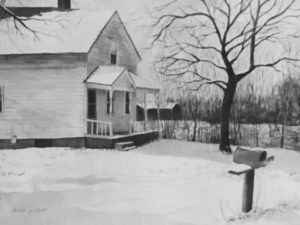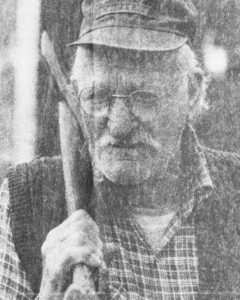
The Peterson Farm
Part I
See part 2 here
See part 3 here
The following was written for the New Haven Register on April 20, 1980, by Israel Amitai; it was saved for many years, and recently it was sent to your Historian by George W. Coxeter. It is a fascinating firsthand account of one family’s life on a West Haven farm, and what life was like one hundred years ago. The Peterson Farm was located where the soccer fields are today, on Bull Hill Lane:
To many, Sweden evokes thoughts of modern and elegant architecture, beautiful countrysides, sophisticated furniture, daring sculpture, elegant people and a model society with an advanced social system and government. Rarely will one associate Sweden with famine, poverty, a hard life and harsh living. Thus, it took us quite a while to digest the answer to the question we asked a man whose parents came here from Sweden at the twilight of the last century.

When we asked Adolph Peterson, “What made your parents leave Sweden and come to America?” His answer was that although he never discussed it with them, his understanding was that they came here because of harsh living on the farm in Sweden.
“All they used to have to eat was sour milk and potatoes. That was the best dish that they could have. They came to America because of the opportunities here to advance their living conditions and earn money.”
Peterson, 84, is testimony to that breed of immigrants who came from Scandinavia and, with their determination, dedication and devotion, helped make America what it is.
“I was born Sept. 20, 1896. My parents came to this country. I don’t know exactly when they came, but they bought this place in 1892. I was born right here in this house. We had a Miss Rose Kronen; she was a midwife. She lived up in Orange, she came down and she was the doctor for all of us. I have lived here every day since. Of course, we spent six winters in Florida. We started in ’58 and went down there until 1970.
“I remember when you couldn’t see an automobile; there wasn’t an automobile on the road when I was born. Up to five years old there never was a car on this road (Bull Hill Lane). If you wanted to get to West Haven, you either had to walk or hook up a team of horses and drive down and tie them up at the station. At York Street they had a pole and the horses waited until we got back on the trolley car.”
Peterson’s manners are pleasant, friendly and hospitable. His memory is very sharp and he comes up with details, dates and names easily. He is a handsome man and somehow instills in you a feeling of belief, of trust in people.
“My brother and I, before the war, about 1915, went to work at L.C. Bates on George Street, and we walked from here to York Street every morning and home again at night. I worked ther for 2-1/2 years. I candled eggs. I moved the eggs in front of the light to see if they were good or bad. Forty cases a day, thirty dozen to the case.
“After that, I went to work at the New Haven Paper Company, and I worked there for a couple of years. Then I went into the army: First World War in the infantry. I stayed here at Camp Devins the whole time. They found a murmur in my heart and wouldn’t let me go over. I served for seventeen months and two days. I stayed on this side.”
To be continued.